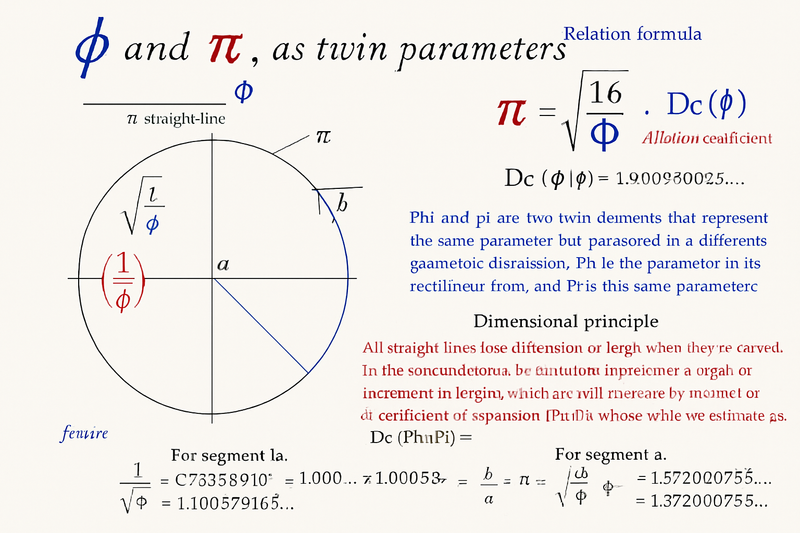We live in a world of curves and lines. Straight paths, like π, and spirals, like φ. The image above proposes them as twins—not opposites, but complementary expressions of the same dimension. One rectilinear, one circular. One stretched, one bent.
The formula is simple but suggestive:
π=16ϕ⋅Dc(ϕ∣π)\pi = \sqrt{\frac{16}{\phi}} \cdot Dc(\phi|\pi)π=ϕ16⋅Dc(ϕ∣π)
where Dc(ϕ∣π)Dc(\phi|\pi)Dc(ϕ∣π) is a dilation coefficient, hovering just above one. The math suggests that π and φ are not independent constants thrown randomly into the universe, but dimensional reflections of one another.
The Dimensional Principle
“All straight lines lose dimension when they are curved.”
That’s the crux here. When a line is bent into a circle, it inherits a negative increment in length—an invisible cost of curvature. Pi accounts for that cost. Phi accounts for the stretch. The dilation coefficient, so close to unity, whispers that the two are shadows cast by the same geometric body.
In practice:
- φ gives us the golden growth of spirals, the scaling ratio of living things.
- π locks the circle, binds circumference to diameter.
- Together they define what it means for the straight to become curved, for expansion to find completion.
The Human Curve
Why does this matter? Because geometry is more than lines on a page. It’s a way of thinking about transformation.
Every straight line in our lives—ambition, ideology, certainty—bends when it meets reality. The curve introduces loss, inefficiency, friction. Yet it also introduces containment, orbit, cycle. Without φ there is no growth; without π there is no closure.
We live inside this dilation coefficient every day, balancing between expansion and return.
A Closing Spiral
If π and φ are twins, then maybe our thinking should stop treating them as separate mythologies—the circle constant on one side, the golden ratio on the other. They are not cult symbols in opposition. They are a pair. A dialogue.
And like all twins, they remind us that identity is not a solitary achievement. It’s relational, recursive. What bends in one straightens in the other.
In that sense, the mathematics of φ and π is not abstract—it is personal.
p.s.: The diagram’s elegance is its understatement. The dilation coefficient of 1.00059… isn’t just “close to one.” It’s the subtle crack in perfection that makes room for resonance. A number small enough to ignore, large enough to remind us that nothing in this universe quite closes perfectly.

